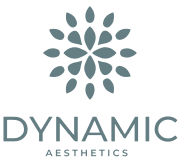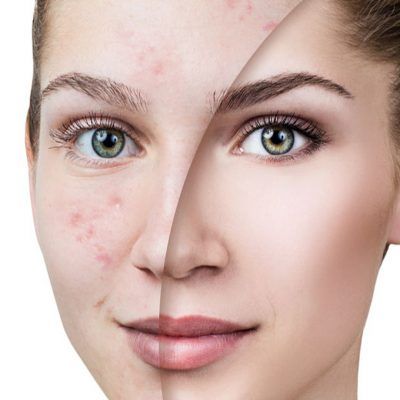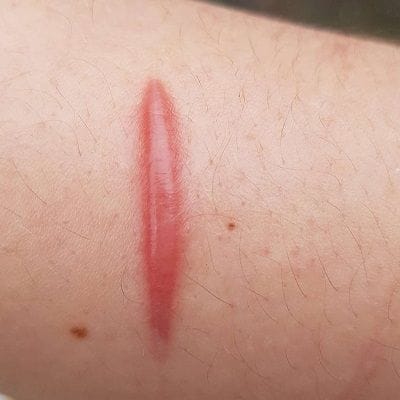
Are you dealing with deep scars that don’t seem to go away, causing you discomfort and a lack of confidence? While most fade with time, some can transform into raised, red, and itchy bumps that spread far beyond the original wound. We understand these can be emotionally and physically draining. Fear not! There are many existing solutions to tame these stubborn marks. Hypertrophic Scars Removal in Dubai offers you a wide range of options to achieve clear skin by getting rid of such concerns permanently. Intrigued? Read the guide; Scar Solutions: Breaking Down Hypertrophic Scars, and dive into the various options and their procedures.
Types of Scar Removal Methods Being Offered:
-
Corticosteroid injections:
This approach involves the insertion of medications through a needle that aims at the area to make it flat and remove any harshness.
-
Silicone Gel Sheeting:
These are to be worn on the site, which ensures they are fully hydrated and healed.
-
Pressure Therapy:
This process involves applying pressure to the marks by using special garments that minimize the size of the scar and its redness.
-
Laser Therapy:
A handheld device releases light beams that tend to aim at these deep marks to decrease its visibility and soreness.
-
Cryotherapy:
This therapy works by freezing the tissue using liquid nitrogen to break down the roughness of the mark.
-
Surgery:
For severe cases, removing the damaged layer through an incision is performed to get rid of the stubborn marks permanently.
Table of Contents
How do these Work to Even-Out the Surface?
Each method aims to completely get rid of this harsh and unwanted part of the skin. Corticosteroid injections specifically focus on the scar tissue, reducing inflammation and collagen production for a flatter, softer scar. On the other hand, silicone gel sheeting keeps the area moisturized, normalizing collagen production and potentially reducing discomfort. Pressure therapy limits blood flow to the scar, reducing collagen and minimizing size. Whereas laser energy targets the scar tissue, reducing redness or breaking down collagen for a smoother appearance. Finally, Cryotherapy freezes and destroys these scar tissue cells, decreasing the overall size. Although the techniques vary, they all strive for the same goal: providing a less visible and improved scar.
What are the Steps Involved During Each Procedure?
A brief outlook on what you can expect regarding the process of the several options addressing this problem is mentioned below:
-
Step 1:
To start, you will schedule a consultation with our expert. In this meeting, the doctor will develop a customized plan designed just for your needs. This involves examining your scar and discussing your preference for the type of technique being performed.
-
Step 2:
The next step requires preparing for the upcoming adjustments. This means you will be asked to follow a pre-treatment guideline for your safety, avoiding any possible side effects.
-
Step 3:
The first and foremost step depending on the approach, the professional may clean or numb the area using an antiseptic solution or anesthesia for a smooth process avoiding discomfort.
-
Step 4:
If you are opting for the Injectable method, a corticosteroid medication will be inserted from a thin needle that effectively targets the scar tissue. This helps to reduce inflammation and flatten the deep mark.
During Laser Therapy, the dermatologist uses a device releasing energetic frequencies to diminish the damaged tissue. Different types of lasers are included, some target blood vessels within the depth of the site, reducing the soreness, while others vaporize the top layers. This is typically an outpatient procedure with minimal discomfort.
Similar to the laser technique, Cryotherapy is an in-office procedure in which the doctor uses liquid nitrogen to freeze the affected tissue. The extreme cold helps to destroy it which causes it to flatten the area over time.
Silicone Gel Sheeting includes placing a thin layer of medical-grade silicone on top of the site. It forms a moisturizing barrier that makes the scar soft, addressing the redness, and making it flat. It is convenient to wear as it avoids irritation. Candidates are likely to wear it for a few hours each day for weeks or months until it completely fades the problematic part.
Pressure Therapy involves applying steady, gentle pressure to the rough area using custom garments or special silicone gel sheets. This pressure aids in reducing scar tissue formation, flattening existing scars, and enhancing blood circulation.
-
Step 5:
Lastly, the surgical option is for those with extreme severity. During this session, the surgeon makes incisions around the targeted area, entirely removing the unwanted site from the top and deep within. The wound is then sealed with stitches. The professional will give you post-treatment instructions to help you aid in a smooth healing process without any disruptions.
What are the Advantages for You?
Mentioned below are several benefits provided by each procedure:
- Candidates not only achieve a clear appearance from these techniques but also regain a boost of self-confidence as well as improve their quality of life.
- These methods lead to a noticeable improvement reducing its size and inflammation.
- As these marks can cause itchiness and discomfort, these treatments completely remove such symptoms.
- Silicone gel sheeting and pressure therapy can prevent them from becoming more prominent as well as effective scar reduction.
- Individuals are given a variety of options and a customized plan according to their own preferred needs.
Book a Free Consultation!
To gain further information on Scar Solutions: Breaking Down Hypertrophic Scars. Please book your free consultation with us by filling out your details in the form below and reserve your appointment with our leading experts at Dynamic Clinic.














